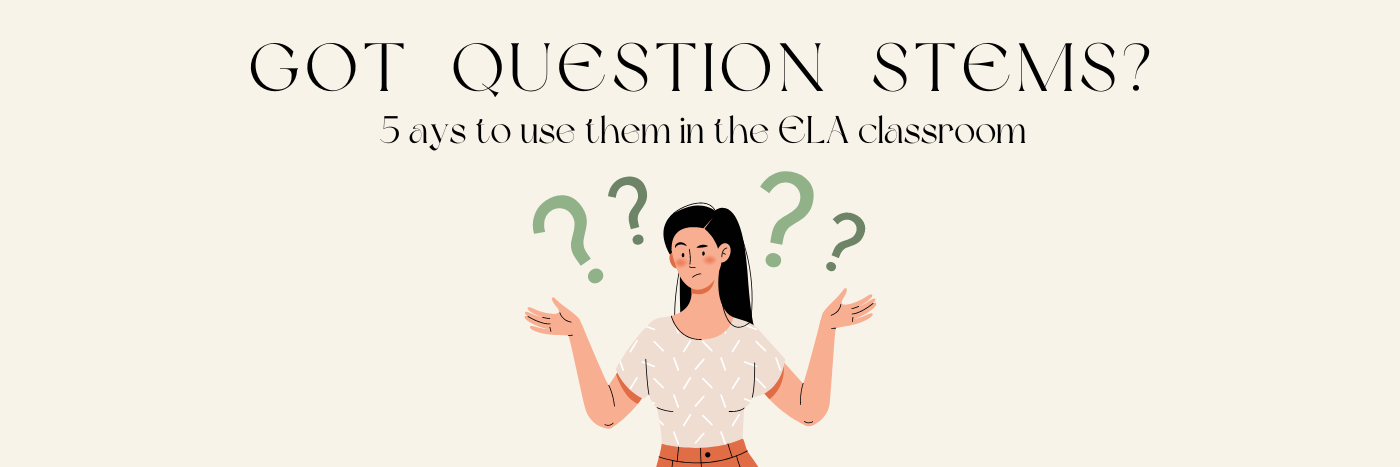
How to Get Class Novels Cheap
5 Ways to Get the Books You Need Without Breaking the Bank
The thing about teaching novels is that it is an investment. It is an investment of your time in planning and the students’ time in the classroom. It also can literally be an investment: novel sets are not just delivered fresh to schools each year. When multiplying by 10, 20, or 30 students, the cost of a class set of books quickly grows. I do not know a single teacher that can really afford to spend the hundreds of dollars it requires to purchase a single class set of books at full price. Trust me, I know. I did spend this much when I first started teaching because I didn’t know of any other way.
When the price tag became a burden I could no longer bear, I sought to find other avenues. My goal was to eliminate access to books as the barrier to teaching the books. I found ways to get the novels I wanted to teach in the hands of each one of my students. Now, with document cameras, screenshare, and other snazzy technology, you may get by with one book. Still, I always liked to loan each student a copy because there’s just something magical about reading and holding the physical pages of a book. Since a school budget that sets aside money specifically for your class set of novels is a rarity, here are the top ways you can still get class sets of books for your students.
1 | FREE – Donors Choose: donorschoose.org
Donors Choose, a philanthropic website where teachers can post projects and request funding for materials, is a great resource for books (and other supplies). Create a project, especially one where novels are a vehicle for real-world application, and list the books and other supplies you need to execute your plan. I found when I was more likely to be funded when I could present a project that included a real-world or cross-curricular connection. No matter what you describe just make sure that you post it well before date you would want to start teaching the material. It may take a while for the project to be funded and for the books to arrive at your school. Note: There are some eligibility requirements to get started, so check to make sure you qualify.
2 | FREE – Amazon Wish List: amazon.com
Similar to Donors Choose, you can create a Wish List on Amazon. Add the books you want to teach and make the list public to the school community, friends, and family. This resource is simple and straightforward. They can use word of mouth or social media to elicit donors. The downside is you don’t get to describe your vision for learning or the impact of the support, which you can do elsewhere and does help garner supporters. That said, it is simple: all you have to do is create the list and start spreading the word.
3 | NEARLY FREE to MORE THAN HALF OFF – First Book Marketplace: fbmarketplace.com
First Book Marketplace is an amazing resource for free and cheap books. They even have newer titles, allowing you to mix it up and teach something fresh off the press. The First Book Marketplace Book Bank allows you to get cartons of books (typically 24 books in a carton) and only asks you pay shipping. Finding the book you want through the Book Bank is more luck than anything else, but it is worth a peek every so often. Then, there is the First Book Marketplace. They partner with the publishing industry to get books into the hands of kids that need them most. If you have 30 kids in your classroom, it still is not cheap, but it’s a start at 50% off or more. The discount can make purchasing a class set a more attainable goal. Note: There are eligibility requirements to create an account, mainly that educators teach in a Title I school.
4 | MORE THAN HALF OFF – Thriftbooks: thriftbooks.com
Thriftbooks is an online marketplace that sells used novels for cheap. If you are looking for older novels and do not mind gently used texts, this is a great resource to get a class set for under $100. Two things to keep in mind when using this site is time of year and book edition. If you are searching for books before the start of the year, you will find less items in stock. Secondly, be wary of the book edition. The site may have five or more editions of the same book (think Of Mice and Men). Make sure to purchase the same edition, otherwise students may be reading on different pages, which can cause page number/location headaches during classes. Finally, the site frequently has 10-15% discounts and you earn reading rewards for purchasing books.
5 | MORE THAN HALF OFF – Scholastic Warehouse Sale: http://www.scholastic.com/fairs/warehouse/index.html
Scholastic Warehouses typically open a few times a year for a huge customer appreciation sale. Get there early and make sure you have room in your car. Since these sales take place at their warehouses, you will likely have to take a small road trip, but it can be worth it, especially for upper elementary and middle grade book sets. If you love to implement literature circles, these warehouse sales are the perfect place to grab small sets of books. Just remember, the titles will fall under the Scholastic publishing umbrella, so if you’re looking for specific texts, check the publisher first to make sure you’ll find it in a Scholastic warehouse. If you live near a Scholastic warehouse, check out the sale for fun and you just might get lucky and snag a great classroom set.
6 | FREE – In-kind donations
People’s generosity can be both inspiring and surprising, especially when it comes to education and books. You may be shocked at how many local businesses, social clubs, and community groups are interested in helping out a classroom. Do not hesitate to write a letter asking for an in-kind donation of a class set of books and see how such a group responds. Explain the book, how you plan to use it, and better yet, how students will make real-world connections and applications with it. I have found the most success reaching out to entities that closely connect with the novel (i.e. a law firm if engaging with a book about a crime and doing a mock trial project). You never know if you will get a response, but there is no harm in asking. In fact, you may just be surprised how generous your community is and make a connection that benefits you and your students time over time. P.S. Do not forget to send student thank you notes!
Acquiring a class set using any of these avenues is still an investment – of your time. It can take effort to secure the books you know will inspire your students, and it does take time to curate a large collection of class sets of novels. The effort will pay dividends for years. It’s all just a matter of getting started and building from there. If you are new to novel sets, begin with one or two the first year, gradually building out your library. Make sure to pick the books you love and really want to teach then expand. It will be worth it. After all, your investment will mean a student – probably one you’ve yet to meet – will have an experience they will not forget. You know that books exist for you. It’s worth the time and energy to put it in the hands of your students. A little time now could have a timeless impact later.
More Blog Posts
It’s time for the annual LIT Lessons Novel Study Giveaway! Year-over-year students grow and change, and those changes are often most pronounced when a new school year begins. It’s a fresh start and a restart. The message of Restart by Gordon Korman captures the spirit of new beginnings, evolving identity, and the universal experience of growing older.
Many ELA question stem resources provide vague sentence starters or surface level prompts to encourage students to engage with a text. Oftentimes, these resources lack true depth and rigor, which means students are not being adequately challenged to critically think about a text.
Middle grades historical fiction novels have come a long way from the books available ‘decades’ ago. In fact, this growing genre is now bursting with fantastic, inspiring, and insightful novels. It comes as no surprise that these books are finding their way into middle school ELA curricula…





